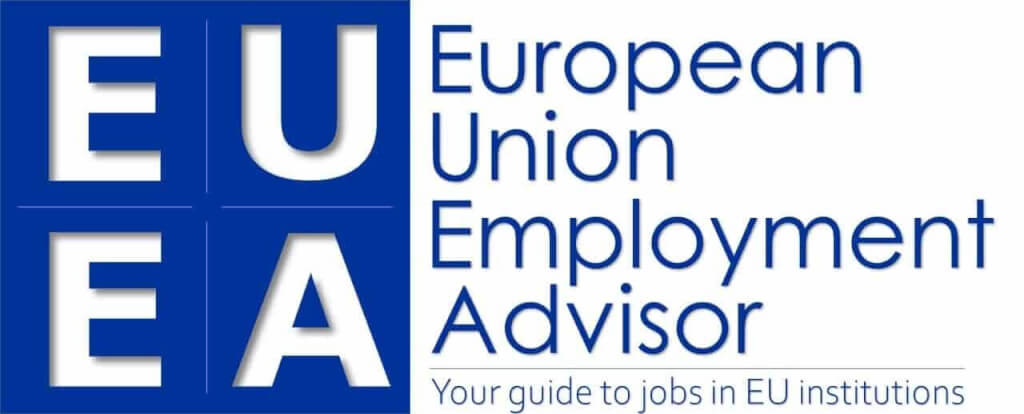This article provides an overview of the salaries and benefits available to Seconded National Experts (SNEs) that are temporarily contracted by the European Commission, EU Agencies and some other EU institutions. It also contains an SNE salary calculator for download. It has been updated with figures as of 1 July 2023.
Technically, SNEs only receive ‘allowances’ from EU institutions, however, ‘salary’, ‘allowances’ and ‘remuneration’ are used interchangeably below. For tax purposes its important to remember that the funds received by SNEs from any EU institution are ‘allowances’ which are not taxed either by EU nor may be taxed by the EU Member State or the seconding institution.
What is an SNE?
Seconded National Experts are employees of EU Member States’ national, regional or local public administration institutions who are “lent” to EU institutions for a period from 6 months to 6 years.
SNEs can be ‘paid’ and ‘cost-free’. ‘Paid’ status for SNEs means that they are paid allowances by the receiving EU institution which also might cover such expenses as children’s education costs. ‘Cost-free’ SNEs means that their income solely comes from the seconding institution and the receiving EU institution does not pay any costs associated with hosting the expert.
‘Cost-free’ experts usually are remunerated following national rules for diplomatic staff and receive substantial national allowances and other top-ups to their salaries like free school for children. This article focuses on the SNEs who receive allowances from the contracting EU institution because the conditions for ‘cost-free’ experts significantly differ from one country to the next.
How much are SNEs paid?
The remuneration package of SNEs consists of two parts:
- Salary and social contributions of the sending national authority (pension, healthcare insurance etc.).
- EU allowances: 1) Daily Subsistence Allowance and 2) Monthly Subsistence Allowance.
While working for an EU institution, the Seconded National Experts should continue to receive a national salary from their seconding institution, as well as any other benefits like social security payments, accrual of pension periods and capital, and service years in public administrations or law enforcement institutions.
However, whether national salaries continue to be paid depends on the country and even by institution on the national level (older EU Member States usually continue to pay salaries, whereas newer ones often don’t). Because the total amount of SNE allowances approximately equals the take-home pay of Administrators in grade AD5 it is very feasible to be an SNE even without the national salary in most EU Member States.
SNE allowance amounts
As of 1 July 2023 the special Seconded National Experts Daily Subsistence Allowance is EUR 160.03. It is paid for every day of the month including weekends. Hence, the SNE DSA amount varies depending on the number of days in a month (28 to 31 days) from EUR 4480.84 to EUR 4960.93.
The Seconded National Experts Monthly Subsistence Allowance is paid to theoretically allow the SNE to return once a month to her/his home country. The amount of this allowance depends on the distance between the place of origin and place of employment. The below table gives a summary of amounts of this allowance.
| Distance between place of origin and place of secondment | SNE Monthly Subsistence Allowance |
|---|---|
| 0-150 km | 0.00 EUR |
| 150-300 km | 102.86 EUR |
| 300-500 km | 182.86 EUR |
| 500-800 km | 297.18 EUR |
| 800-1300 km | 480.06 EUR |
| 1300-2000 km | 754.39 EUR |
| 2000-10000 km | 903.00 EUR |
Correction Coefficient
SNE allowances are adjusted by the Correction Coefficient just like salaries and allowances for regular EU institutions staff. In short, this means that if you’re seconded in a more expensive country than Brussels, your total allowance basket will be revised upwards. If your institution is in a “cheaper” country according to Eurostat, you’ll receive somewhat less money than your peers in Brussels and Luxembourg. See this EBA document regarding application of the Correction Coefficient to SNE allowances.
SNE salary – sample calculations
SNE salary calculation template
For calculations choose the column with right distance between your ‘place of origin’ and ‘place of secondment/employment’ and then add up amounts in all rows of that column. You can also use the calculator available for download below.
| Distance of EU institution from place of origin | 0-150km | 150-300km | 300-500km | 500-800km | 800-1300km | 1300-2000km | 2000+ km |
| National salary | ? | ? | ? | ? | ? | ? | ? |
| SNE Daily Subsistence Allowance | 4960.93 | 4960.93 | 4960.93 | 4960.93 | 4960.93 | 4960.93 | 4960.93 |
| SNE Monthly Subsistence Allowance | 0 EUR | 102.86 | 182.86 | 297.18 | 480.06 | 754.39 | 903.00 |
| Total SNE salary | 4960.93 | 5063.79 | 5143.79 | 5258.11 | 5440.99 | 5715.32 | 5863.93 |
| Total FINAL SNE salary | ? | ? | ? | ? | ? | ? | ? |
EXAMPLE: Salary calculation for a Belgian SNE contracted by CEPOL in Budapest, Hungary
The below table shows remuneration calculation for a Belgian Seconded National Expert with a contract with CEPOL, the EU Agency for Law Enforcement Training. The calculation assumes an air distance of 1129km between Brussels and Budapest and a national net salary of 3000 EUR, but you have to replace both values with your own distance and actual salary numbers.
Distance between place of origin and place of employment/secondment is always calculated “as the crow flies” in a straight line and does not take into account any ground travel challenges like terrain or road repairs.
| National salary EUR | 3000* |
| SNE Daily Subsistence Allowance EUR | 4960.93 |
| SNE Monthly Subsistence Allowance EUR for distances of 800-1300km between home and EU institution | 480.06 |
| Total SNE salary EUR | 8440.99 |
*National salary is not indexed by the Correction Coefficient.
EU rules state that all allowances to SNEs must be paid every month no later than by the 25th day of the month. This differs from regular EU institutions staff that receive their salaries by the 12th day of each month.
Other benefits in addition to allowances
Just as regular staff of EU institutions, SNEs are entitled to the same working time rules. SNEs are entitled to:
- Annual and special leave
- Sick leave
- Maternity and paternity leave
- Coverage of mission (business trips) expenses
- Training available to regular staff (in most institutions)
Types of special leave usually available to SNEs:
- marriage of the SNE: two days;
- serious illness of spouse: up to three days;
- death of spouse: four days;
- serious illness of a relative in the ascending line: up to two days;
- death of a relative in the ascending line: two days;
- birth of a child: ten days;
- serious illness of a child: up to two days;
- death of a child: four days;
- removal for taking up duty : 2 days
- adoption of a child : 20 weeks, or 24 weeks in the case of adoption of a disabled child.
Duration of contracts
Most SNEs are usually contracted for periods from 6 months to 2 years. It is common that SNE contracts are extended for up to 4 years (usually 2 plus 2 years). In exceptional circumstances, usually justified by the expertise of the particular SNE and its lack at the EU institution, their contracts can be extended for up to 6 years.
After SNE contracts end, the persons are expected to return to their national administrations. However, a significant number of SNEs manage to find a job and remain at their EU institution as they often pay more and offer better social guarantees than the homecountry civil service.
EU conditions
For a public official to become a civil servant, one has to satisfy the below general conditions. In additional, of course, the person has to be an expert in the particular policy or operational field.
- Employed by public administration of eligible countries for at least 12 months.
- Must legally remain in the service of the sending country (EU Member State or other) for the duration of the contract with an EU institution with the possibility to return to her/his previous or similar position.
- Have at least 3 years of work experience.
- Know at least two EU languages including English/French (depending on the main working language used in the particular EU institution).
SNEs also have a number loyalty requirements that also apply to other staff categories:
- SNEs must work in the interest of the contracting EU institution.
- Any rights to intellectual assets produced during the secondment period remain as property of the contracting institution.
- SNEs are not allowed to give privileged access to their seconding state or institution to documents or other information thay can access while working for an EU institution.
Following the formal whetting process, SNEs usually have to undergo a test in their fielf of expertise and and interview. The process is identical to how EU agencies and other institutions that don’t use EPSO procedures select their candidates. You can read more here about the EU agency selection process (tests and interviews).
SNE reserve lists
Justs as in other selection processes in EU institutions, it is common for the top candidate to get the advertised post, while other top candidates are placed on a reserve list and are offered another post once it becomes available without advertising the vacancy. For this reason, if you are interested in becoming an SNE in a particular institution, you should start applying at least two years in advance of the ideal secondment period to ensure that you are on enough reserve lists to be offered a post or to try to negotiate it. Institutions can only offer a post to a potential SNE if he or she is already shortlisted.
Why are EU institutions hiring SNEs?
The official reason why EU institutions contract SNEs is to benefit from specialized knowledge and experience of Member States experts, particularly in areas where such expertise is not readily available.
Another and, in practice, just as important reason – it allows the EU institutions to hire extra staff when permanent employment positions (Administrators, Assistants and Contract Agents) are not available for administrative or financial reasons.
Where to find SNE vacancies?
SNE vacancies are usually listed in the same locations as for other contract types (see hiring portals of EU agencies), however the selection process is usually much simpler, consisting just of filling out an application form and an interview, withouth the testing that applicable to other contract types.
Who can become an SNE?
Most SNEs are experts from EU Members States and the European Free Trade Area (EFTA) public administration institutions like ministries of government agencies.
Some EU agencies like Eurojust even accept staff of universities and research organisations and enterprises operating in the public sector. However, such broad acceptance of various SNE background is not common. As an example, the Single Resolution Board emphasizes its independence from private interests and requires management to approve “non-regular” SNEs on a casey-by-case basis.

EU institutions increasingly also accept staff of international institutions, as well as the so-called IPA and ENP countries. IPA stands for the Instrument for Pre-Accession Assistance and covers ‘EU candidate countries and potential candidates’. These are the six Western Balkans countries – Albania, Bosnia and Herzegovina, Kosovo*, Montenegro, North Macedonia, Serbia – and as of July 2022 also Ukraine and Moldova. ENP stands for the European Neighbourhood Programme and covers a broader set of countries in Europe’s Soutner and Eastern neighborhoods.
Moving from SNE status to permanent employment
While there are no public statistics about how many SNEs remain in the EU institutions after their secondment is over, it most likely is a substantial number. This is due to the fact that salaries in EU institutions compared to most member states except the very affluent ones are relatively competitive.
SNEs over their secondment have not only gained an insight into how an institution works, but also proved their worth and built the necessary social networks. Hence, when the end of the secondment period arrives and there are vacancies at the institution, SNEs have an advantage over most competitors coming from the outside.
Experiences of other SNEs
If you are interested in experiences of SNEs in a particular EU institution or of your compatriots, one of the best ways to get in touch with a relevant colleague is through LinkedIn. People usually list their post title as “Seconded national expert to [name of institution]”, hence it is easy to find. Don’t hesitate to drop a message as most people are happy to share their experiences even with strangers, particularly if they see your LinkedIn profile at the same time.
Information for SNEs by EU institution (where available):
- CEPOL, European Union Agency for Law Enforcement Training
- ECHA, European Chemicals Agency
- EMCDDA, European Monitoring Centre for Drugs and Drug Addiction
- eu-LISA, EU Agency for the Operational Management of Large-Scale IT Systems in the Area of Freedom, Security and Justice
- Eurojust, EU Agency for Criminal Justice Cooperation
- Europol, EU Agency for Law Enforcement Cooperation
- FRA, Fundamental Rights Agency
- Frontex, European Border and Coast Guard Agency
Do you have question or suggestion for this article? Please share in a comment below and let’s make this resource better for you and other readers!







18 responses to “Seconded National Experts (SNEs) salary calculator”
Hi and thanks for the information! Do the Sne have to right to enroll their children to the European schools for free?
Hello,
You stated above that “I do not know whether one or both of the SNE allowances are adjusted by the Correction Coefficient”.
According to the following document, yes, both allowances are adjusted:
https://www.eba.europa.eu/sites/default/files/2024-01/63198e46-9006-4c45-b2b4-0fc96bf39586/Overview%20of%20the%20allowances%20-%20SNE%20-%20as%20of%2001-01-2024.pdf
Thanks for sharing, warmly appreciated. I updated the article accordingly.
Hello,
I was wondering what allowances would I receive for a remote secondment e.g. most of the time done in home country and maybe 1 day/week in Amsterdam?
Thanks
Can anyone advise on a reputable source for SNEs allowance being tax free
Hi Mauro,
in Italy it has been clarified by Agenzia delle Entrate
Both daily and monthly allowances are adjusted by the correction coefficient in EBA’s example at the very least.
https://www.eba.europa.eu/sites/default/files/2024-01/63198e46-9006-4c45-b2b4-0fc96bf39586/Overview%20of%20the%20allowances%20-%20SNE%20-%20as%20of%2001-01-2024.pdf
Do you get a daily substitence allowance if you are already working in the same country, which is Belgium in my case?
Hi! Yes, as an SNE you should be entitled to the daily subsistence allowance even if you are seconded from Belgian institutions. As you see, the monthly allowance is relatively small. The daily subsistence allowance is supposed to make up most of the income for an EU SNE.
The SNE DSA is different from the DSA that other staff categories (temporary agents and contract agents) are entitled to. See article on this other type of the DSA: https://euemployment.eu/daily-subsistence-allowance-for-new-eu-employees/.
Could you please give the reference documents of this statement:
“For tax purposes its important to remember that the funds received by SNEs from any EU institution are ‘allowances’ which are not taxed either by EU nor may be taxed by the EU Member State or the seconding institution.”
Re: Updating allowance rates: Thank you, Ben – last revision of rates was in 2021 🙂 Kind regards, Henning
Thanks again, article now updated with 1 July 2023 figures.
Hi there
Is it possible to have the SNE allowance-calculator updated with the latest rates ( from July 1st 2023)
Thank you 🙂
Hi! Thanks for the suggestion, will try to do.
https://bruessel-eu.diplo.de/blob/2602686/87d65a986f2cb49b0a027796b86ae801/end-tagegeld-ab-01-07-2023-data.pdf
Last paragraph. The difference in information given is probably because all your sources were Brussels based and the original commenter is based elsewhere than Brussels or Luxembourg.
Thanks for sharing, source now linked in the updated article.
TCM, hi and thanks for the comment? Can you provide a source for this? I’ve communicated with several SNEs and they’ve said their allowances are not adjusted by the correction coefficient.
I’d be happy to update the article, but I think that the readers would also appreciate a source for this. Thanks in advance!
Actually, the SNE’s allowances are adjusted by the correction coefficient